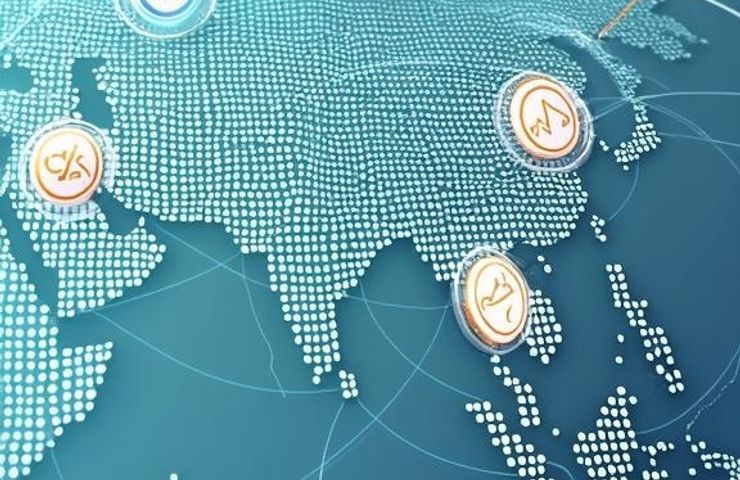
Global Hydrogen Trade Goes Transparent as EU, US, and Japan Turn to Digital Traceability
July 28, 2025Global Hydrogen Trade Goes Transparent
Governments and industry players across the EU, U.S., Japan, and South Korea are all jumping on the same bandwagon—hydrogen that’s traceable, clean, and trustworthy. By July 2025, new policies, tax breaks, and mounting ESG expectations are making digital certification for hydrogen production less of a bonus and more of a baseline. These traceability systems help track everything from the carbon footprint to the origin of hydrogen—basically, making sure it’s as green as it claims to be.
Key Insights
- Back in 2023, fewer than 10% of global hydrogen projects had digital traceability in place, according to the Hydrogen Council.
- Europe’s CertifHy system and the U.S. Department of Energy’s 45VH2-GREET tool are now forming the backbone of credible, verifiable hydrogen supply chains.
- Blockchain, IoT, digital twins, and AI-powered analytics are turning hydrogen into a smart, fully trackable commodity.
- Tax incentives like 45V credits and carbon border rules like CBAM are pushing businesses to get on board, fast.
Tech That’s Making It Happen
To keep tabs on every kilogram of hydrogen out there, governments and industry alliances are rolling out some cutting-edge tech:
- Blockchain systems assign unique digital IDs to shipments, letting you follow the journey from plant to pump.
- IoT sensors and smart meters are in charge of tracking purity, carbon levels, and even how hydrogen is being stored—live and in real-time.
- Digital twins recreate hydrogen facilities in virtual form, helping with audits, simulations, and compliance checks.
- AI-backed analytics dig through the data to flag any red flags—like inefficiencies or sketchy emissions claims.
Business Strategy: From Compliance to Competitive Edge
Let’s be real: hydrogen traceability isn’t just about crossing the regulatory t’s anymore—it’s turning into a critical business edge. Getting certified means easier access to incentives like the U.S. 45V tax credits, and it could help dodge trade penalties under CBAM. Companies with verified green hydrogen don’t just play by the rules—they get first dibs on international deals and can charge more, too.
For example, Germany’s H2 MOBILITY and the U.S.’s H2USA projects are building hydrogen fueling stations with traceability baked right into the infrastructure. In Japan, they’re already testing out blockchain-based hydrogen passports to verify imports. The future is knocking, and it’s digitally verified.
Global Policy Convergence—Finally
After years of scattered approaches, countries are finally syncing up. Europe’s RED II directive and the U.S. DOE hydrogen roadmap are driving a shift away from voluntary disclosures to required reporting. More than 30 nations have either implemented or are planning to mandate hydrogen certification. CertifHy is leading the charge in Europe, while the U.S. is sticking with its GREET model. Cross-border alignment is still a work in progress, but one thing’s for sure: in a no-bluff energy market, full transparency is the new currency.
What’s at Stake
If we don’t crack traceability, hydrogen risks going the way of greenwashing—big promises, little proof. And that could spell trouble: yanked funding, denied shipments, or backlash from regulators and the public. On the flip side, getting it right means serious upside, including:
- Solid regulatory footing in both Europe and North America.
- Stronger ESG credentials—a big deal if you’re chasing green investment dollars.
- Access to high-value carbon markets and performance-based pricing.
- Smoother international trade thanks to interoperable certifications.
Long View: Traceability as Infrastructure
The International Energy Agency estimates that by 2050, global demand for hydrogen could skyrocket past 500 million tons. If we stay on track with certification, green hydrogen could make up about 60% of that. And the market for hydrogen certification itself? It could hit $20 billion by 2030. At that point, traceability won’t just be a regulatory checkbox—it’ll be the backbone of the entire clean energy ecosystem.
Closing Insight
What started out as a paperwork chore is now something much bigger. In the global race to build a clean hydrogen economy, traceability is your boarding pass. If you’ve got the data, you’re cleared for takeoff. If not? You’re grounded.



 With over 15 years of reporting hydrogen news, we are your premier source for the latest updates and insights in hydrogen and renewable energy.
With over 15 years of reporting hydrogen news, we are your premier source for the latest updates and insights in hydrogen and renewable energy.